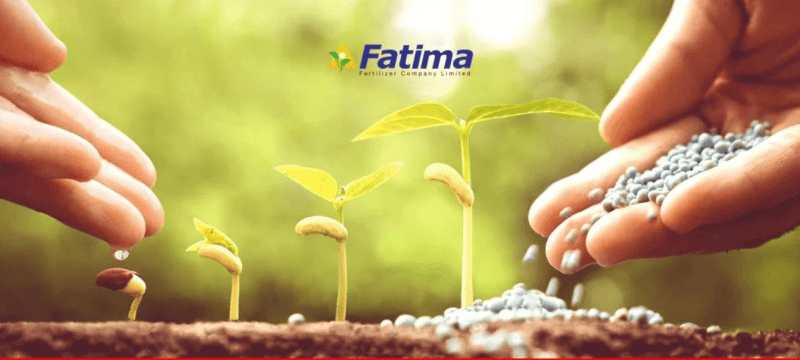In the realm of Pakistan’s fertilizer industry, one company has been on a remarkable journey since its inception in 2003 – Fatima Fertilizer Company Limited (PSX: FATIMA). Established as a result of a strategic collaboration between the renowned Fatima Group and Arif Habib Group, this enterprise has evolved into a key player in the nation’s agriculture and chemicals sector.
Read More: Why Everyone’s Going Crazy for Organic Products
Strategically headquartered in Lahore, Fatima Fertilizer operates three state-of-the-art production facilities in strategic locations across Punjab: Multan, Sheikhupura, and Sadiqabad. The company’s core activities encompass the manufacturing, procurement, sale, import, and export of chemicals and fertilizers. With a fully integrated production setup, Fatima Fertilizer generates two intermediate products – Ammonia and Nitric Acid – and four final products, including Urea, Calcium Ammonium Nitrate (CAN), Nitro Phosphate (NP), and Nitrogen Phosphorous Potassium (NPK).
Amidst this intricate operational landscape, Fatima Fertilizer also boasts a 56 MW captive power plant, ensuring uninterrupted energy supply for its operations. Additionally, the company benefits from a gas allocation of 110 million cubic feet per day (MMCFD) from dedicated Mari Gas fields.
As of December 2021, Fatima Fertilizer boasts a substantial outstanding share capital of 2100 million shares, with a diverse ownership structure consisting of 9166 shareholders. The company’s significant ownership stakes are held by associated companies, undertakings, and related parties, collectively constituting 42.66 percent of the total shares. Directors, their spouses, and minor children possess approximately 29 percent of the shares. Sponsors of the company hold a 17.31 percent stake, followed by banks, development financial institutions, and non-banking financial institutions with 2.7 percent ownership. The local general public also maintains a stake of 2.45 percent in FATIMA. The remaining shares are distributed among various categories of shareholders, including foreign entities, NIT and ICP, insurance companies, modarabas, and mutual funds.
Examining the historical performance of Fatima Fertilizer from 2017 to 2021, a compelling narrative unfolds. During this period, the company demonstrated a consistent upward trajectory in both its topline and bottom line, marked by remarkable growth. However, a notable deviation occurred in 2020, primarily attributed to the disruptive effects of the COVID-19 pandemic.
In 2020, while Fatima Fertilizer witnessed a 5 percent year-on-year dip in its topline due to pandemic-induced disruptions across sectors, the company remarkably managed to achieve a 10 percent year-on-year increase in its bottom line. This resilience translated into an impressive net profit margin of 18.64 percent, compared to 16.10 percent in 2019. Delving deeper into the details, 2020 emerged as a pivotal year for the company, marked by a 1.8 percent year-on-year growth in volumetric sales, reaching 1.87 million tons – a record high at that time. This growth was underpinned by expanded production capacity, driven by the acquisition of production and operating plant assets from its associated company, Pakarab Fertilizer Limited. Despite a 5 percent year-on-year revenue decline in 2020, attributable to lower Urea prices and pandemic-related buying delays, Fatima Fertilizer achieved a commendable gross profit margin of 40.4 percent, up from 37.22 percent in 2019. This feat was facilitated by a government subsidy on Re-gasified Liquefied Natural Gas (RNLG), provided by the Government of Pakistan to Sui Northern Gas Pipelines Limited (SNGPL).
Moreover, the company reported substantial growth in other income, surging by 66 percent year-on-year in 2020. The reclassification of a provision for Gas Infrastructure Development Cess (GIDC) and the temporary gain from restructuring this provision during the year contributed significantly to bolstering the company’s bottom line. However, Fatima Fertilizer also provisionally recognized a loss allowance on subsidies receivable from the Government of Pakistan.
In stark contrast, 2019 was characterized by a contrasting story of robust topline growth, driven by a volumetric sales increase of 17.1 percent over 2018. Despite this impressive sales growth, margins significantly contracted in 2019, leading to a modest 1 percent year-on-year increase in the bottom line. A closer examination reveals that the company’s gross profit margin declined to 37.22 percent in 2019 from 50.03 percent in the preceding year. This contraction resulted from escalating input costs, inflation, Pak Rupee depreciation, and high-cost RLNG operation at the Sheikhupura plant. Additionally, finance costs mounted due to both an increased discount rate and substantial amounts tied up with the Government of Pakistan in the form of Sales Tax refunds and receivable subsidies.
In 2021, Fatima Fertilizer reached new heights, achieving the highest-ever sales volume of 2.68 million tons, a remarkable year-on-year growth of 43 percent. This surge was attributed to enhanced production capacity realized by the company in 2020. Alongside robust sales volume, the substantial price hike of fertilizer products in 2021 contributed to a record-breaking 58 percent year-on-year growth in the company’s topline. Strong demand for fertilizers, driven by favorable wheat support prices, further buoyed the company’s performance.
However, the increase in production costs, stemming from the conclusion of the concessionary gas period at the Sadiqabad plant, high input costs (especially for phosphatic fertilizer), Pak Rupee devaluation, and the absence of subsidy on RLNG, impacted the gross margin. Distribution and administrative expenses surged due to the full-year operation of three production plants. Improved liquidity enabled Fatima Fertilizer to reduce its short-term and long-term borrowings, consequently mitigating









